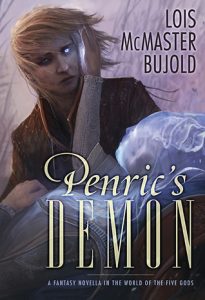 This Great Hemisphere by Mateo Askaripour
This Great Hemisphere by Mateo Askaripour Format: eARC
Source: supplied by publisher via Edelweiss
Formats available: hardcover, paperback, large print, ebook, audiobook
Genres: dystopian, science fiction, speculative fiction, political thriller
Pages: 432
Published by Dutton Books on July 9, 2024
Purchasing Info: Author's Website, Publisher's Website, Amazon, Barnes & Noble, Kobo, Bookshop.org, Better World Books
Goodreads
From the award-winning and bestselling author of Black Buck : A speculative novel about a young woman—invisible by birth and relegated to second-class citizenship—who sets off on a mission to find her older brother, whom she had presumed dead but who is now the primary suspect in a high-profile political murder.
Despite the odds, Sweetmint, a young invisible woman, has done everything right her entire life—school, university, and now a highly sought-after apprenticeship with one of the Northwestern Hemisphere’s premier inventors, a non-invisible man belonging to the dominant population who is as eccentric as he is enigmatic. But the world she has fought so hard to build after the disappearance of her older brother comes crashing down when authorities claim that not only is he well and alive, he’s also the main suspect in the murder of the Chief Executive of the Northwestern Hemisphere.
A manhunt ensues, and Sweetmint, armed with courage, intellect, and unwavering love for her brother, sets off on a mission to find him before it’s too late. With five days until the hemisphere’s big election, Sweetmint must dodge a relentless law officer who’s determined to maintain order and an ambitious politician with sights set on becoming the next Chief Executive by any means necessary.
With the awe-inspiring defiance of The Power and the ever-shifting machinations of House of Cards , This Great Hemisphere is a novel that brilliantly illustrates the degree to which reality can be shaped by non-truths and vicious manipulations, while shining a light on our ability to surprise ourselves when we stop giving in to the narratives others have written for us.
My Review:
Shakespeare said it best, but the Bard said an awful lot of things very, very well, which is why we keep quoting him. In The Merchant of Venice (Act 1, Scene 3), there’s a famous proverb that says that, “The devil can cite Scripture for his purpose.” It’s something the reader is forced to reckon with in This Great Hemisphere – even if the characters for the most part don’t have the education to recognize the phenomenon.
They’re not supposed to. That’s part of the story. In fact, a more accurate paraphrase of that quote as it applies to This Great Hemisphere would be that “the devil can WRITE Scripture for his purpose.” because that is exactly what has happened during the five centuries between our now and the future experienced by Sweetmint and her people.
As Sweetmint discovers over the course of this story, there’s another quote that applies even more, from a part of the Bible that the powers-that-be of the Northwestern Hemisphere have undoubtedly excised as part of their thoroughgoing revision of Scripture to suit their purposes. It’s the one from Ecclesiastes (1:9) that goes: “What has been will be again, what has been done will be done again; there is nothing new under the sun.” Or as it was put more succinctly in Battlestar Galactica, “This has all happened before. All of this will happen again.”
But Sweetmint and her friends do not know any of this when her story begins. It may have all happened before – in fact it has all happened before – but it hasn’t happened before TO HER and her perspective is what carries the story from hope and compliance to desperation, rebellion and tragedy. And maybe, just maybe, back to hope – or at least a brief approximation thereof.
But what is it that has happened before? Sweetmint’s story – or the story that takes place around her and through her, is just the kind of metaphor that science fiction does well when it takes an issue that is real and present – and generally terrible – and shifts it in time and space, alters just a few of the parameters – and forces the reader to see an obscured truth for what it really is.
This Great Hemisphere is set on Earth, five centuries into a future where a portion of the human population is born invisible. Because humans are gonna human, and governments always need a common enemy to class as less than human to keep everyone else in line, invisibles have been cast as a threat and dehumanized in every way possible. They are denied higher education, voting rights, land ownership, good jobs, good housing, etc., etc., etc. Denied all of those things by law and forced to live in remote villages so that the dominant population can never really know them so that they can be more easily demonized.
Sweetmint is supposed to be a “model Invisible” and has earned a place as an intern – not a servant, but an actual intern – with one of the men responsible for the creation of this system. He’s using her for the next step in his “great plan”.
But we see this broken society through Sweetmint’s eyes as the scales are removed from them. She learns that nothing she believes bears much of any resemblance to any objective truth and that the system is rotten from within – always has been and intends to always be so.
What makes the story so compelling is that even as we watch it unravel, we’re still riveted by her attempts to force a new way through. That even though it may be hopeless in the long run, there can be a reprieve in the short run – and possibly more. And we’re there for her and for it – even if the specific future she hoped for is not.
Escape Rating A-: I obviously had a lot of thoughts about this as I was reading it, and I have more. It’s that kind of book.
It does absolutely fly by. The author has done an excellent job of creating a world that is firmly rooted in the history we know and yet manages to shine a light on it from a different corner. Using invisibility as a metaphor for race allows the reader to be firmly grounded in our own historical perspective and yet provides a vector by which anyone can imagine themselves as Sweetmint because there are circumstances in which anyone can be rendered invisible.
I’m all over the map on what I thought and felt about this book, and it’s making writing it up all kinds of difficult. On the one hand, as I said, it’s compelling to read. On a second hand, I felt like the social issues part was a bit heavy-handed – but at the same time, I recognize that my own background makes me more familiar with some of the issues – albeit from a slightly different angle, and as someone whose read a lot of history the repetitive patterns are not exactly news.
From the point of view of someone who reads a lot of science fiction, this very much fits into the spec fic, SFnal tradition of exploring an all too real past and present issue by setting it in either a time or place away from the here and now. Something that even the original Star Trek series did both well and badly – sometimes at the same time – and there’s an episode that’s particularly on point in this regard, Let That Be Your Last Battlefield.
In other words, in yet another attempt to make a long story short and probably fail at it again, This Great Hemisphere is a compelling story, both because of Sweetmint’s originally naive perspective and because the actual political machinations going and increasing enmeshment in the consequences of them – sometimes intentionally but often not. And the ending – oh that was a stunner in a way that just capped off the whole thing while still leaving just a glimmer of possibility – if not necessarily a good one – for the world in which it happens.

 Penric and the Bandit (Penric and Desdemona #13) by
Penric and the Bandit (Penric and Desdemona #13) by  Learned Divine Penric kin Jurald of Vilnoc is ALWAYS the single most dangerous person in the room in any situation because of his magic, his demon Desdemona, and the favor of his god, the Lord Bastard – and has been since the very first novella in this series,
Learned Divine Penric kin Jurald of Vilnoc is ALWAYS the single most dangerous person in the room in any situation because of his magic, his demon Desdemona, and the favor of his god, the Lord Bastard – and has been since the very first novella in this series,  Escape Rating A: After the previous entry in this series, the rather cozy and close to home
Escape Rating A: After the previous entry in this series, the rather cozy and close to home  The Mummy of Mayfair (An Irregular Detective Mystery #2) by
The Mummy of Mayfair (An Irregular Detective Mystery #2) by 
 Guard the East Flank: a military romantic suspense (Night Stalkers Reload Book 1) by
Guard the East Flank: a military romantic suspense (Night Stalkers Reload Book 1) by  Lieutenant Colonel Emily Beale was a legend among the Night Stalkers. And so she should be, considering her many, many firsts and achievements and successful missions. (If you want details – and you should if you love military romance! – check out the original
Lieutenant Colonel Emily Beale was a legend among the Night Stalkers. And so she should be, considering her many, many firsts and achievements and successful missions. (If you want details – and you should if you love military romance! – check out the original  I’ve been a fan of this author since I read the very first
I’ve been a fan of this author since I read the very first  “Better Living Through Algorithms” by Naomi Kritzer in Clarkesworld Magazine Issue 200, May 2023) by
“Better Living Through Algorithms” by Naomi Kritzer in Clarkesworld Magazine Issue 200, May 2023) by  Requiem for a Mouse (Cat in the Stacks, #16) by
Requiem for a Mouse (Cat in the Stacks, #16) by  Escape Rating B: I’m here for Diesel. Not just because I’ve always wanted a Maine Coon, but because he’s just sweet and charming – and large – but also because he’s intelligent and empathetic but on a cat scale and not a human one. There are quite a few cozy mystery series that feature cats – and why not? – but it’s refreshing that the cat in this series doesn’t solve the mysteries on his own and doesn’t mysteriously help his person solve them.
Escape Rating B: I’m here for Diesel. Not just because I’ve always wanted a Maine Coon, but because he’s just sweet and charming – and large – but also because he’s intelligent and empathetic but on a cat scale and not a human one. There are quite a few cozy mystery series that feature cats – and why not? – but it’s refreshing that the cat in this series doesn’t solve the mysteries on his own and doesn’t mysteriously help his person solve them. Ivy, Angelica, Bay by
Ivy, Angelica, Bay by 
 Pets and the City: True Tales of a Manhattan House Call Veterinarian by
Pets and the City: True Tales of a Manhattan House Call Veterinarian by  Reality Rating B: The author does several things in this collection of cat tales and not-necessarily-shaggy dog stories. First she tells her own tale, her origin story, not just how and why she became a vet, but how she fell – or was pushed, she was definitely pushed – into opening her peripatetic Manhattan practice.
Reality Rating B: The author does several things in this collection of cat tales and not-necessarily-shaggy dog stories. First she tells her own tale, her origin story, not just how and why she became a vet, but how she fell – or was pushed, she was definitely pushed – into opening her peripatetic Manhattan practice. Unexploded Remnants by
Unexploded Remnants by  A Ruse of Shadows (Lady Sherlock, #8) by
A Ruse of Shadows (Lady Sherlock, #8) by  (This is a hint, by the way. Theoretically the books in this series could be read as standalone, but I wouldn’t recommend it. It’s not just that the endings of each book flow into the next, but that there’s a vast, interconnected and rather sticky web between all of the cases – at least so far. I’m glad I began at the beginning with A
(This is a hint, by the way. Theoretically the books in this series could be read as standalone, but I wouldn’t recommend it. It’s not just that the endings of each book flow into the next, but that there’s a vast, interconnected and rather sticky web between all of the cases – at least so far. I’m glad I began at the beginning with A Escape Rating B+: I have consistently found this series to be fascinating and frustrating in equal measure – and this entry in the series is no exception.
Escape Rating B+: I have consistently found this series to be fascinating and frustrating in equal measure – and this entry in the series is no exception. This story is also a bit of a mirror image to
This story is also a bit of a mirror image to